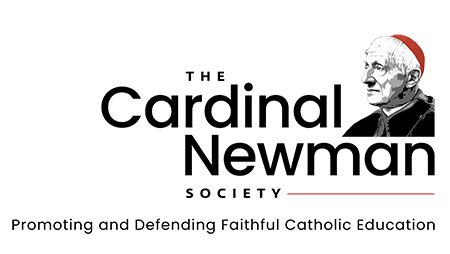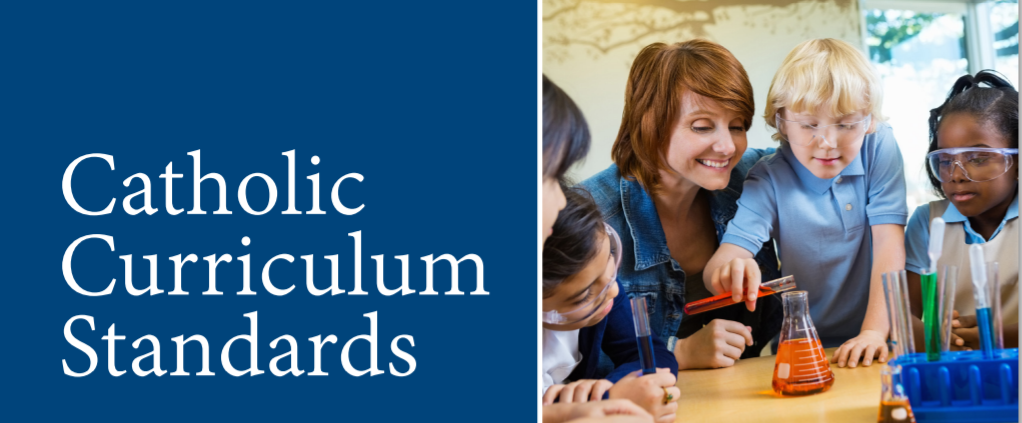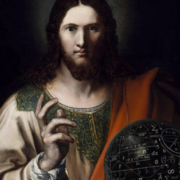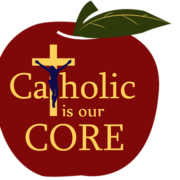Educating to Truth, Beauty and Goodness
Editor’s Note: The following essay appears in Appendix A of The Cardinal Newman Society’s Catholic Curriculum Standards.1
The world, in all its diversity, is eager to be guided towards the great values of mankind, truth, good and beauty; now more than ever…Teaching means to accompany young people in their search for truth and beauty, for what is right and good. — Educating Today and Tomorrow: A Renewing Passion, 2014 2
We want our students to maximize their human potential and to both be good and do good in authentic freedom. In order to do this, our students need to be able to know how to wisely and fully apprehend and interrogate all aspects of reality from a solid Christian intellectual tradition. This intellectual tradition involves not just teaching facts and skills, but is also essentially focused on seeking to know the value and nature of things and in appreciating the value of knowledge for its own sake.
One method of assisting students to keep focus on these aspects of Catholic intellectual inquiry is to use the lenses of truth, goodness, and beauty to evaluate a subject under consideration. These three elements are often understood as being among the transcendentals. Transcendentals are the timeless and universal attributes of being.3 They are the properties of all beings. They reflect the divine origin of all things and the unity of all truth and reality in God. These elements are among the deepest realities. They help unite men across time and culture and are often a delight to explore and discuss, because they are substantive to our very nature.
The transcendentals of truth, beauty, and goodness are closely intertwined. Dubay (1999) observed that, “Truth beauty and goodness have their being together, by truth we are put in touch with reality which we find is good for us and beautiful to behold. In our knowing, loving and delighting the gift of reality appears to us as something infinitely and in-exhaustively valuable and fascinating.”4 In seeking to discuss one, the others are naturally and organically brought into the conversation.
The following simple definitions and essential questions are provided as a general framework to help facilitate a discussion on any topic in any subject. The goal is not to generate easy questions for easy answers, but to generate foundational questions for deep inquiry into the value and nature of things, to instill a sense of the intrinsic value of knowledge, and to elicit a sense of wonder.
Beauty
Beauty can help evoke wonder and delight, which are foundations of a life of wisdom and inquiry.5 Beauty involves apprehending unity, harmony, proportion, wholeness, and radiance.6 It often manifests itself in simplicity and purity, especially in math and science.7 Often beauty has a type of pre-rational (striking) force upon the soul, for instance when one witnesses a spectacular sunset or the face of one’s beloved. Beauty can be understood as a type of inner radiance or shine coming from a thing that is well-ordered to its state of being or is true to its nature or form.8
Beauty pleases not only the eye or ear, but also the intellect in a celebration of the integrity of our body and soul. It can be seen as a sign of God’s goodness, benevolence and graciousness, of both His presence and His transcendence in the world.9 It can serve as re-enchantment with the cosmos and all reality10 and assist in moving our students to a rich and deep contemplative beholding of the real.11
Some essential questions related to beauty:
- Is “X” beautiful? How so? Why not?
- Which of these (i.e., poems, experiments, proofs, theories, people, functions, concepts) is more beautiful and why? Why might others have thought this beautiful?
- How does this person/thing attract? Is this person using their God-given gifts to attract in a way that pleases God and draws others closer to God? What can happen when beauty is not used for the glory of God?
- What is delightful, wondrous about this person/thing?
- How does this shine? Radiate?
- How is faithfulness to form or nature powerfully evident here?
- What does this reveal about the nature of what is seen?
- Where is there unity and wholeness here?
- Where is there proportion and harmony here?
- How does this reveal God’s graciousness, presence, and transcendence?
- What does my response to this reveal about me?
- Is this also Good? Is this also True?
Goodness
When we explore issues of goodness with our students, we are fundamentally asking them to consider questions of how well someone or something fulfills its purpose. Goodness is understood as the perfection of being. A thing is good to the degree that it enacts and perfects those powers, activities, and capacities appropriate to its nature and purpose. A good pair of scissors cuts, a good eye has 20/20 vision, and so forth. We have to know a thing’s purpose, nature, or form to engage in an authentic discussion of “The Good.” When we get to questions of what is a good law, a good government, a good father, or a good man, the discussion quickly grows richer, deeper, and more complex.
As Catholic educators, our goal is to help our students to become good persons. Among those qualities we deem good are wisdom, faithfulness, and virtue. Virtue is a habitual and firm disposition to do the good.12 We are free to the extent that with the help of others, we have maximized these goods, these proper powers and perfections as man.13 Such efforts raise fundamental questions of what it means to be human and our relationships with each other, the created world, and God.
God, through reason and revelation, has not left us blind on these issues, nor has He left us up to our own subjective devices. It is a fundamental responsibility of the Catholic school to teach and pass on this Catholic culture, this Catholic worldview, this cultural patrimony, these insights, and these very fundamental truths about the good and what constitutes the good life.14 Particularly, in this and all our efforts as Catholic educators, we build our foundation of the good on Jesus Christ, who is the perfect man, and who fully reveals man to himself.15
Some essential questions related to goodness:
- What is this thing’s purpose/end? What do we know from our senses and reason? From nature and natural law? What do we know from revelation?
- What is this thing’s nature? What do we know from our senses and reason? From nature and natural law? What do we know from revelation?
- What perfections are proper to this thing in light of its purpose?
- To what degree does the particular instance we are considering possess or lack these perfections?
- What, if anything, would make this better?
- What would make this worse?
- How well does this work? Is “X” a good “Y”? What makes “X” a good “Y”? (e.g., Is Odysseus a good husband? Is the liver we are diagnosing a good liver? Is the theory of relativity a good theory? Is Picasso a good artist?)
- How does this measure up in terms of a Catholic worldview and values?
- How does this measure up in terms of Catholic morality and virtue?
- How does this measure up to God’s plan or expectations of it as revealed in Christ?
- Is this also beautiful? Is this also true?
Truth
A simple definition for truth is the mind being in accord with reality.16 We seek always to place our students and ourselves in proper relationship with the truth. Nothing we do can ever be opposed to the truth, that is, opposed to reality which has its being in God. Catholics hold that when our senses are in good condition and functioning properly under normal circumstances, and when our reason is functioning honestly and clearly, we can come to know reality and have the ability to make true judgments about reality. Through study, reflection, experimentation, argument and discussion, we believe that an object under discussion may manifest itself in its various relations, either directly or indirectly, to the mind.17
We believe that Man tends by nature toward the truth. Even though due to our fallen nature we may sometimes seek to ignore or obfuscate the truth, we are nonetheless obliged to honor and bear witness to it in its fullness. We are bound to adhere to the truth once we come to know it and direct our whole life in accordance with the demands of truth.18 As Catholics, we believe that reason, revelation, and science will never be in ultimate conflict, as the same God created them all.19 We oppose scientism which without evidence makes the metaphysical claim that only what can be measured and subject to physical science can be true. We oppose relativism, not only because its central dictum “there is no truth” is self-contradicting, but also because in removing objective truths from any analysis, this also removes the possibility of gauging human progress, destroys the basis for human dignity, and disables the ability to make important moral distinctions such as the desirability of tolerance20 and wisdom of pursuing truth, beauty, and goodness as opposed to their opposites of error, ugliness, and sin.
Some essential questions related to truth:
- Is it true?
- Is our mind/concept in accord with reality?
- Are we looking at this clearly and with our senses and reason properly attuned?
- Is the thinking rational and logical?
- Is the information and reasoning clear and precise?
- Is the approach fair and balanced?
- How does this square with what we know from revelation? If there is a disconnect, where further shall we explore?
- On what intellectual, moral, or intuitive principle are we basing this?
- Can the knowledge or situation under consideration be integrated with or expanded by the knowledge from another academic discipline?
- Now that we know this particular truth about a thing, what other questions does that raise? What more do we want to know?
- Is this also beautiful? Is this also good?
- An adapted version of this essay also appears in After the Fall: Catholic Education Beyond the Common Core
- Congregation for Catholic Education. (2014). Educating today and tomorrow: A renewing passion. Conclusion.
- Harden, J. (1980). Modern Catholic dictionary. New York, NY: Image Books.
- Dubay, T. (1999). The evidential power of beauty: Science and theology meet. San Francisco, CA: Ignatius Press, 23.
- Aristotle, Metaphysics, 1.982b.
- Thomas Aquinas, Summa Theologiae, I, 5,4 and 1q.39.a.8.
- Dubay, The evidential power of beauty: Science and theology meet, 24.
- Saward, J.(1997). The beauty of holiness and the holiness of beauty: Art sanctity and the truth of Catholicism. San Francisco, CA: Ignatius Press, 47.
- Hart, D. (2003). The beauty of the infinite: The aesthetics of Christian truth. Cambridge, UK: Eerdmann’s Publishing, 17.
- Caldecott, S. (2009). Beauty for truth’s sake: The re-enchantment of education. Grand Rapids, MI: Brazos Press, 17.
- Pieper, J. (1998). Leisure and the basis of culture. South Bend, IN: St. Augustine’s Press, 31.
- Catechism of the Catholic Church: Revised in Accordance with the Official Latin Text Promulgated by Pope John Paul II. (1997). Vatican City: Libreria Editrice Vaticana.1830.
- Hancock, C. (2005). Recovering a Catholic philosophy of elementary education. Mount Pocono, PA: Newman House Press, 86.
- The Religious Dimension of Education in a Catholic School, 108.
- Second Vatican Ecumenical Council. (1965). Gaudium et Spes, 22.
- St. Thomas Aquinas De Veritate, Q.1, A.1-3; cf. Summa Theologiae, Q.16.
- For a more complete discussion of this topic see p. 64-70, Recovering a Catholic Philosophy of Elementary Education by Curtis Hancock.
- Catechism of the Catholic Church, 2467.
- The Religious Dimension of Education in a Catholic School, 54.
- Beckwith, F. & Koukl, G. (1998). Relativism: Feet firmly planted in midair. Grand Rapids, MI: Baker Books, 62-69.




 St. Agnes School, St. Paul, MN
St. Agnes School, St. Paul, MN

 Photo by David Mark via Pixabay CC0
Photo by David Mark via Pixabay CC0